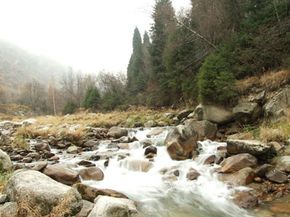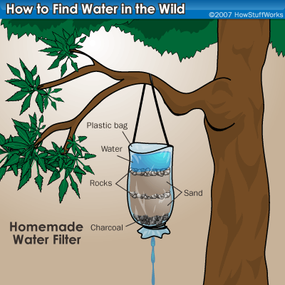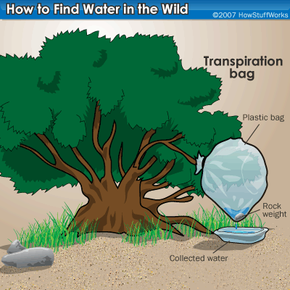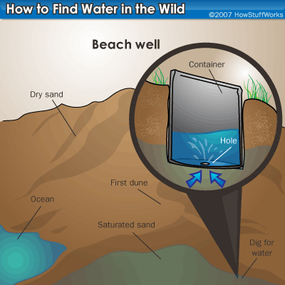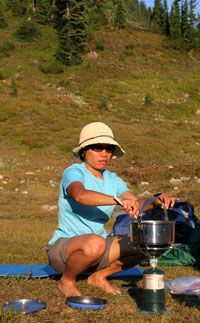Getting lost or stranded in the wild is something that could happen to just about anyone. Day hikers, tourists, Sunday drivers and experienced outdoorsmen are all subject to circumstances beyond their control. Any and all of them could end up alone and lost, with only their wits to rely on for survival. The single most important thing you need to live is water. If you're resourceful and know where to look, you can find or collect good drinking water in just about any environment on Earth.
To maintain good health, the human body needs a minimum of two quarts of water per day [source: Field Manual 21-76-1]. If you're lost in the wild, chances are you'll be exerting yourself, and you may be in a hot or cold environment. Both of these factors mean you should drink more than the minimum amount. It's easy to think that a cold environment might pose less of a risk, but that's not the case. You may perspire less, but you lose water through your skin because of the dry air. You should also drink more water if you're in heavy winds.
Advertisement
Your body is about two-thirds water and uses it to help circulate blood, process food and assist other internal processes. If you use more water than you take in, you'll begin to suffer from dehydration. With severe dehydration, your cells shrink and circulation stops, causing a lack of oxygen flow to your muscles. Dehydration can start as soon as six hours of not having water, and more than a full day without water is cause for serious concern. The human body can only live about three days without it.
Now that we understand the importance of water, it should be pretty clear that your shelter should be as close to a water source as possible. If you're lucky enough to find a source, you need to make sure you purify it. Clear rivers and lakes may look clean, but there are millions of organisms in fresh water. If you don't purify it, you can get extremely sick from bacteria or viruses. Freshwater springs can be safe to drink from without filtering, but in a survival situation you should err on the side of caution.
In this article, we'll take a look at different ways you can find or collect safe drinking water in the wild.
Advertisement
